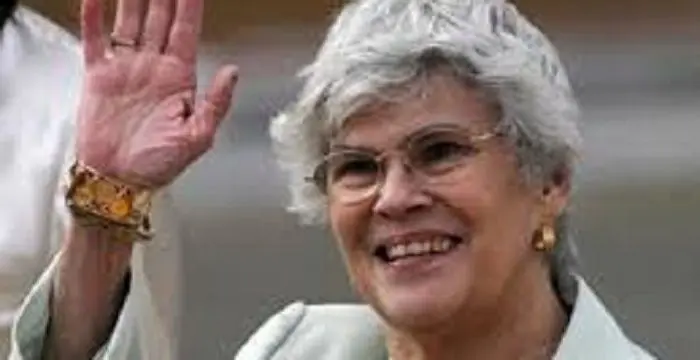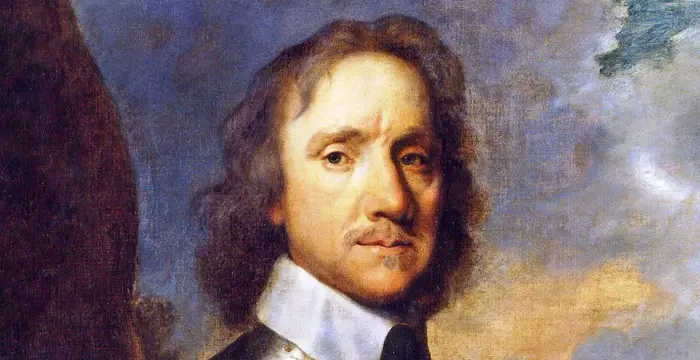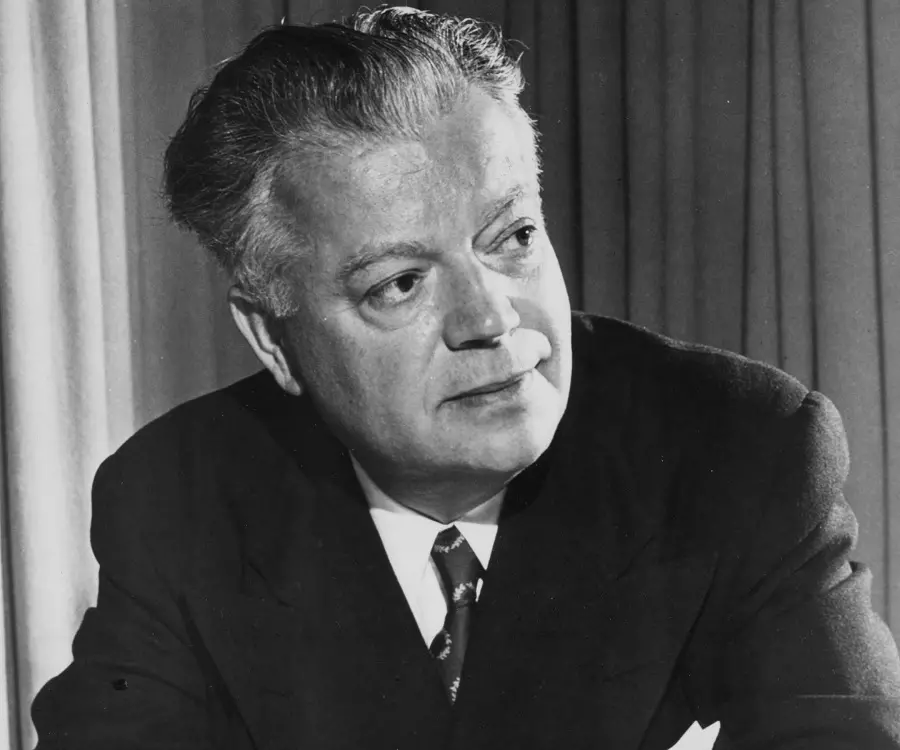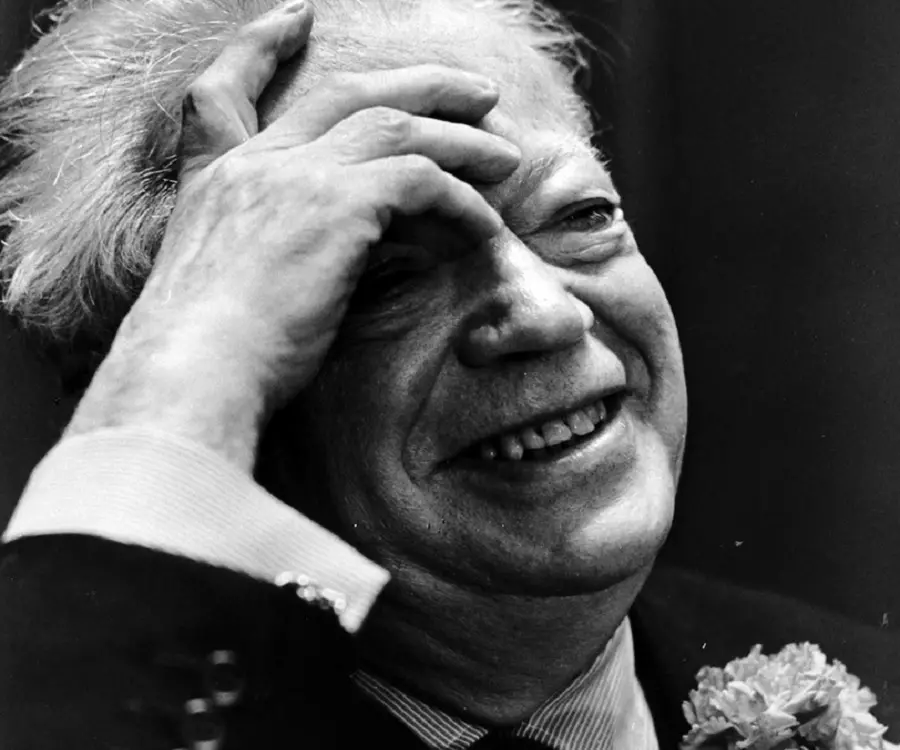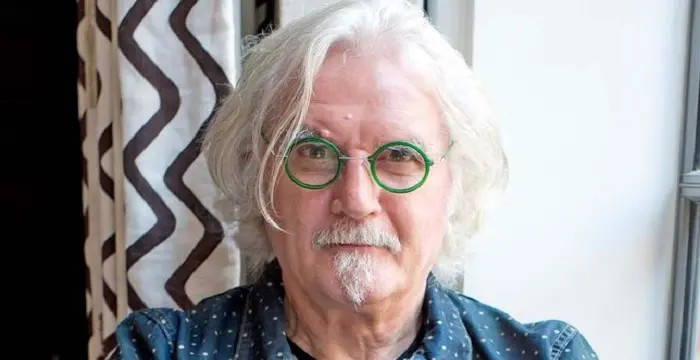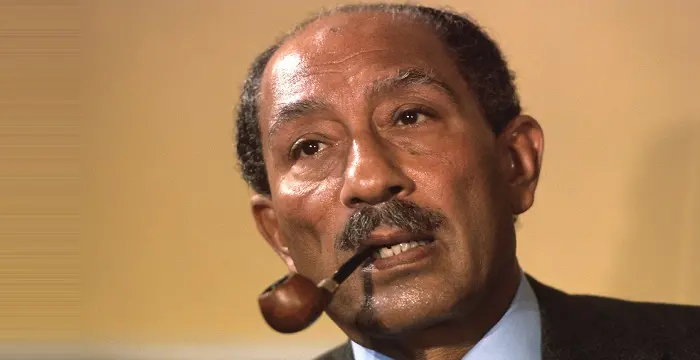
David Dubinsky - Political Leaders, Timeline and Facts
David Dubinsky's Personal Details
David Dubinsky was a renowned labour leader and also helped in starting the ‘American Labor Party’
| Information | Detail |
|---|---|
| Birthday | February 22, 1892 |
| Died on | September 17, 1982 |
| Nationality | American |
| Famous | Socialists, Leaders, Political Leaders, Political Leaders |
| Ideologies | Socialists |
| Humanitarian Works |
|
| Birth Place | Brest |
| Gender | Male |
| Sun Sign | Pisces |
| Born in | Brest |
| Famous as | Political leader |
| Died at Age | 90 |
// Famous Political Leaders
Ahmad Shah Massoud
Ahmad Shah Massoud, who was known in his native Afghanistan as the ‘Lion of Panjshir’, was a political and military leader. This biography profiles his childhood, life, military and political career and timeline.
Violeta Chamorro
VioletaChamorro was the former President of Nicaragua and is credited for ending the raging Civil War and establishing peace in the country. To know more about her childhood, career, profile and timeline read on
Oliver Cromwell
Oliver Cromwell was an was an English statesman, soldier, and revolutionary. This biography profiles his childhood, career, life, achievements and timeline.
David Dubinsky's photo
Who is David Dubinsky?
David Dubinsky was one of the most prominent leaders of the United States. From being a baker he rose to the ranks of one of the most significant leaders of the Labor Party. His journey started as a leader, after he joined the ‘Baker’s Union’. His leadership qualities got noticed and he was then elected as a board of member of the ‘Local 10’ association of the ‘ILGWU’. From that time onwards he has held many posts in the ‘ILGWU’, operated in difficult situations and emerged successful in his undertakings. He has led the ‘International Ladies’ Garment Workers’ Union’ through upheavals and over the years proved his management skills by lifting the union from a deteriorated condition to one of the most influential associations of the United States. This leader understood the plight of the labourers and formulated reformative and innovative schemes to provide better working environment and benefits. These significant moves by the political leader in turn increased productivity. He was also politically active and his association with the American President Franklin D. Roosevelt helped him in reviving the desolate and debt stricken condition of the Union and overcome the aftermaths of the ‘Great Depression’
// Famous Socialists
Karl Marx
Karl Marx was a Prussian-German philosopher, revolutionary, historian and socialist whose communist ideologies and works laid the foundation for ‘Marxism’. Explore this biography to learn more about his childhood, life achievements, works & timeline.
Billy Connolly
Billy Connolly is a Scottish actor, musician and stand-up comedian. Check out this biography to know about his childhood, family life, achievements and fun facts about his
Julia Gillard
Julia Gillard is a former Prime Minister of Australia and the first woman to hold the position. To know more about her childhood, career, profile and timeline read on
Childhood & Early Life:
David Dubinsky was born to Bezalel Dobnievski and Shaina Wyshengrad on 22nd February 1892 in Brest-Litovsk, Russian Empire (present day Brest, Belarus). The boy had five other siblings and he was the youngest of them all.
His family moved to Lodz, Poland where his father established a bakery. At a tender age, he started helping his father with works at the bakery and also distributed bread to various shops. At the same time, he studied at a Hebrew school and learnt languages such as Russian, Polish and Yiddish.
Career:
When he was a teenager, he became skilled at baking and even joined the ‘Bakers’ Union’ which was associated to ‘The Bund’, an activist union of Jewish labourers.
In 1907, he was taken into custody for a brief period by the Czarists for his association with the political outfit ‘Bund’, following the ‘Russian Revolution of 1905’.
After his release, he joined the union again and was instrumental in organizing a strike of the bakers in Lodz. This resulted in his arrest for a second time, after which he was sent to Brest-LItovsk. Dubinsky unlawfully travelled back to Lodz and resumed his association with the union.
In 1908, he was again arrested and even asked to go to Siberia. David shrewdly escaped from this exile, returned to Lodz and continued his baking work by adopting a pseudo name.
He moved to the City of New York in the year 1911, where he started working as a garment cutter, and also joined the ‘Local 10’ association of the ‘International Ladies’ Garment Workers’ Union (ILGWU)’.
He was engaged in socialist work until his marriage in 1914, but after that he decided to focus more on his work and be involved in the local activities of the union.
In 1918, Dubinsky was included in the board of members of the union ‘Local 10’ and the following year he was appointed as the union’s vice-president.
He was appointed as the President of ‘Local 10’ in the year 1920, and a year later, he was appointed as the General Manager of the union. This position earned him a lucrative salary and eliminated the need to continue with the garment cutter’s job.
This great leader was elected as a member of the ‘International’s General Executive Board’ in 1922.
Dubinsky worked as a campaigner for a former ‘Industrial Workers of the World (IWW)’ association member named Morris Sigman in the ‘ILGWU’ elections. David lent his full support to the latter, who earned the post of the President of ‘ILGWU’ in 1923.
The leader was then appointed as the General Secretary-Treasurer of the same, in the year 1929, and he retained the position for the next thirty years.
This leader was appointed to the position of the President of the ‘International Ladies’ Garment Workers’ Union’ (ILGWU) in the year 1932, after the death of the former president and he continued his office for more than thirty years. So, he simultaneously held two major positions in the ‘ILGWU’.
In 1934, he became a member of the executive council of ‘American Federation of Labor’, but resigned from its membership due to difference in opinions with respect to providing support for organizing mass-production.
In 1936, he established the ‘American Labour Party’ along with another labour leader named Sidney Hillman.
He introduced the scheme of a death benefit fund for the members of the ‘ILGWU’ in 1937.
As a president, he developed various departments in the ‘ILGWU’ such as the Management and Engineering Department in 1941 and also the Legal Department, Political Department, and ‘Investment Department’ in the consequent years.
Dubinsky re-joined the ‘American Federation of Labour’ in the year 1945, as its vice-president and was also included in the executive council.
The staff retirement fund of the ‘ILGWU’ was introduced in the year 1946, after a series of negotiations.
During the 1950s, Dubinsky was actively involved with the ‘Liberal Party’ and continued to provide his support towards the party, till he retired from the ‘ILGWU’.
In 1966, he retired from the post of President of the ‘International Ladies’ Garment Workers’ Union’ (ILGWU) and established the ‘ILGWU Retiree Service Department’ and also assumed the post of its Director.
This leader penned his autobiography titled ‘David Dubinsky: A Life with Labor’, which was published in the year 1977.
Major Works:
During his presidency of the ‘International Ladies’ Garment Workers’ Union (ILGWU), Dubinsky brought a radical change in the union by increasing its number of workers from around 45,000 to about 450,000. He initiated many new schemes like the pension plans, housing and health centres in the union.
He was instrumental in the amalgamation of the ‘American Federation of Labor’ (AFL) and the ‘Committee on Industrial Organizations’ (CIO) organizations in the year 1955.
Awards & Achievements:
He was honoured with the highest civilian award of the United States, the ‘Presidential Medal of Freedom’ in January 1969 by the President of the United States.
Personal Life & Legacy:
He married Emma Goldberg in the year 1914, and after that he refrained from engagements with the ‘Socialist Party’ and the cooperative movements. The leader rather preferred to focus on his craftsmanship and local union issues.
Max D. Danish wrote a biography about David Dubinsky in the year 1957 and named it ‘The World of David Dubinsky’.
Another book based on the life of this prominent leader is ‘Tailor’s Progress: the Story of a Famous Union and the Men who Made It’, written by Benjamin Stolberg.
Irving Bernstein’s a couple of books have a mention of this great leader. These are ‘The Lean Years: A History of the American Worker, 1920-1933’ and ‘Turbulent Years: A History of the American Worker, 1933-1941’, which were published in the 1960s.
He is reported to have been unwell for a long time and on 17th September 1982; he breathed his last in Manhattan. His obituary was published in the newspaper ‘New York Times’ on the very next day.
Trivia:
He enthusiastically supported US President Franklin D. Roosevelt’s domestic programs called ‘New Deal’
// Famous Political Leaders
Edi Rama
Edi Rama is the current Prime Minister of Albania. Check out this biography to know about his childhood, life, achievements, works & timeline.
Khalifa bin Zayed Al Nahyan
Sheikh Khalifa bin Zayed Al Nahyan is the current President of the United Arab Emirates (UAE). Check out this biography to know about his birthday, childhood, family life, achievements and fun facts about him.
Leo Varadkar
Cam Leo Varadkar is the current Taoiseach—the Prime Minister—of the Republic of Ireland. Check out this biography to know about his childhood, family life, achievements and other facts about his life.
David Dubinsky biography timelines
- // 22nd Feb 1892David Dubinsky was born to Bezalel Dobnievski and Shaina Wyshengrad on 22nd February 1892 in Brest-Litovsk, Russian Empire (present day Brest, Belarus). The boy had five other siblings and he was the youngest of them all.
- // 1905 To 1907In 1907, he was taken into custody for a brief period by the Czarists for his association with the political outfit ‘Bund’, following the ‘Russian Revolution of 1905’.
- // 1908In 1908, he was again arrested and even asked to go to Siberia. David shrewdly escaped from this exile, returned to Lodz and continued his baking work by adopting a pseudo name.
- // 1911He moved to the City of New York in the year 1911, where he started working as a garment cutter, and also joined the ‘Local 10’ association of the ‘International Ladies’ Garment Workers’ Union (ILGWU)’.
- // 1914He was engaged in socialist work until his marriage in 1914, but after that he decided to focus more on his work and be involved in the local activities of the union.
- // 1914He married Emma Goldberg in the year 1914, and after that he refrained from engagements with the ‘Socialist Party’ and the cooperative movements. The leader rather preferred to focus on his craftsmanship and local union issues.
- // 1918In 1918, Dubinsky was included in the board of members of the union ‘Local 10’ and the following year he was appointed as the union’s vice-president.
- // 1920He was appointed as the President of ‘Local 10’ in the year 1920, and a year later, he was appointed as the General Manager of the union. This position earned him a lucrative salary and eliminated the need to continue with the garment cutter’s job.
- // 1920 To 1941Irving Bernstein’s a couple of books have a mention of this great leader. These are ‘The Lean Years: A History of the American Worker, 1920-1933’ and ‘Turbulent Years: A History of the American Worker, 1933-1941’, which were published in the 1960s.
- // 1922This great leader was elected as a member of the ‘International’s General Executive Board’ in 1922.
- // 1923Dubinsky worked as a campaigner for a former ‘Industrial Workers of the World (IWW)’ association member named Morris Sigman in the ‘ILGWU’ elections. David lent his full support to the latter, who earned the post of the President of ‘ILGWU’ in 1923.
- // 1929The leader was then appointed as the General Secretary-Treasurer of the same, in the year 1929, and he retained the position for the next thirty years.
- // 1932This leader was appointed to the position of the President of the ‘International Ladies’ Garment Workers’ Union’ (ILGWU) in the year 1932, after the death of the former president and he continued his office for more than thirty years. So, he simultaneously held two major positions in the ‘ILGWU’.
- // 1934In 1934, he became a member of the executive council of ‘American Federation of Labor’, but resigned from its membership due to difference in opinions with respect to providing support for organizing mass-production.
- // 1936In 1936, he established the ‘American Labour Party’ along with another labour leader named Sidney Hillman.
- // 1937He introduced the scheme of a death benefit fund for the members of the ‘ILGWU’ in 1937.
- // 1941As a president, he developed various departments in the ‘ILGWU’ such as the Management and Engineering Department in 1941 and also the Legal Department, Political Department, and ‘Investment Department’ in the consequent years.
- // 1945Dubinsky re-joined the ‘American Federation of Labour’ in the year 1945, as its vice-president and was also included in the executive council.
- // 1946The staff retirement fund of the ‘ILGWU’ was introduced in the year 1946, after a series of negotiations.
- // 1955He was instrumental in the amalgamation of the ‘American Federation of Labor’ (AFL) and the ‘Committee on Industrial Organizations’ (CIO) organizations in the year 1955.
- // 1957Max D. Danish wrote a biography about David Dubinsky in the year 1957 and named it ‘The World of David Dubinsky’.
- // 1966In 1966, he retired from the post of President of the ‘International Ladies’ Garment Workers’ Union’ (ILGWU) and established the ‘ILGWU Retiree Service Department’ and also assumed the post of its Director.
- // Jan 1969He was honoured with the highest civilian award of the United States, the ‘Presidential Medal of Freedom’ in January 1969 by the President of the United States.
- // 1977This leader penned his autobiography titled ‘David Dubinsky: A Life with Labor’, which was published in the year 1977.
- // 17th Sep 1982He is reported to have been unwell for a long time and on 17th September 1982; he breathed his last in Manhattan. His obituary was published in the newspaper ‘New York Times’ on the very next day.
// Famous Leaders
Edi Rama
Edi Rama is the current Prime Minister of Albania. Check out this biography to know about his childhood, life, achievements, works & timeline.
Tecumseh
Tecumseh was a Native American leader of the Shawnee clan. This biography profiles his childhood, life and timeline.
Khalifa bin Zayed Al Nahyan
Sheikh Khalifa bin Zayed Al Nahyan is the current President of the United Arab Emirates (UAE). Check out this biography to know about his birthday, childhood, family life, achievements and fun facts about him.
Anwar Sadat
Anwar Sadat was the third President of Egypt and has been awarded the Nobel Prize for his peace initiatives. To know more about his childhood, career, profile and timeline read on the following biography.
Leo Varadkar
Cam Leo Varadkar is the current Taoiseach—the Prime Minister—of the Republic of Ireland. Check out this biography to know about his childhood, family life, achievements and other facts about his life.
Swami Vivekananda
Swami Vivekananda was the chief disciple of Sri Ramakrishna, and was responsible for awakening India spiritually. Check this biography to know in detail about his life, profile and timeline.
David Dubinsky's FAQ
What is David Dubinsky birthday?
David Dubinsky was born at 1892-02-22
When was David Dubinsky died?
David Dubinsky was died at 1982-09-17
Which age was David Dubinsky died?
David Dubinsky was died at age 90
Where is David Dubinsky's birth place?
David Dubinsky was born in Brest
What is David Dubinsky nationalities?
David Dubinsky's nationalities is American
What is David Dubinsky ideologies?
David Dubinsky's ideologies is Socialists
What is David Dubinsky's sun sign?
David Dubinsky is Pisces
How famous is David Dubinsky?
David Dubinsky is famouse as Political leader

